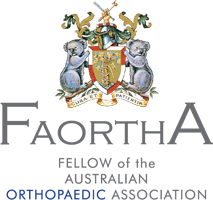Introduction
What is an Orthopaedic Surgeon?
Orthopaedic surgeons are musculoskeletal specialists whose job is multi-faceted and includes prevention, diagnosis, and treatment of disorders of the bones, joints, ligaments, tendons and muscles. Some orthopaedists are generalists, while others specialize in certain anatomical areas of the body, such as:
- Hip and knee.
- Foot and ankle.
- Shoulder and elbow.
- Hand.
- Spine.
Professor Steadman is a biological specialist in bone and soft tissue cancer and as each cancer is unique in its location and size and not confined to nay one area of the body,
Who are our patients?
Orthopaedic surgeons treat patients of all ages— from 0 to 100 years. We treat conditions that include traumatic bone and soft tissue injuries,including cancer, joint replacement for arthritis, revsions, sports injuries and spinal injuries .
What does an Orthopaedic Surgeon treat?
As experts, orthopaedic surgeons explore nonsurgical options first, such as pain management or rehabilitation. They also have the expertise to perform surgery to repair an injury or correct a condition. This is what differentiates an orthopaedic surgeon from a musculoskeletal physician or a rheumatologist.
Musculoskeletal pain is the number one reason why people visit their doctors each year.
Why choose an Orthopaedic Surgeon- unedrstand the philosophy of orthopaedic practice
Many people think an orthopaedic surgeon just operates, but an orthopaedic surgeon is a musculoskeletal expert with training in diagnosis with extensive experience and importantly a broad overview of both conservative or non-surgical, and surgical treatment of injuries and diseases of the musculoskeletal system. Professor Steadman will guide you through that process.
High-quality orthopaedic care is invaluable. It helps people reclaim their quality of life.
The value of orthopaedic care is that it helps you get back to work, to family life, and to doing the things you love.
Indications
The indications for orthopaedic surgery can be diverse, but it is all about helping people improve the quality of their lives. This can include managing pain, improving musculoskeletal function or uniquely in Professor Steadman’s subspecialty practice, the management of a rare form of cancer known as sarcoma.
When you visit with Professor Steadman, you will understand your musculoskeletal diagnosis, your treatment options, the indications for surgery, the potential complications which unfortunately must be addressed and your recovery.
Preoperative Instructions
Before surgery you will fast for 6 hours meaning no food or fluids [your anaesthetist will confirm these details]. You will come to the hospital at the designated time and go through a hospital and nursing admission. You will then have a preoperative talk with Professor Steadman and his anesthetist, your limb will be marked for surgical safety and then you will proceed through to the operating theatre.
Procedure
Orthopaedic procedures are diverse and cover all parts of the body. Before you have any surgery, Professor Steadman will talk to you so that you understand what is being done and how it is being done. If you would like to see still photos of your operation make a request so that you can understand what has been done.
Postoperative Instructions
Post-operative instructions have several phases. The first phase is what to do either in hospital or when you get home if you are a day surgery patient. We will confirm with you or your family what you need to do at home post operatively. Mostly this will entail rest. You will get some instructions to start moving so that you can avoid the complications of blood clots and you will receive information regarding your wound care.
Risks
Risks are part of surgery. Prior to surgery, Professor Steadman will discuss with you the risks of your surgery and work through your operative consent. You cannot have an operation unless you have a signed informed consent and consent is a complex process. Consent entails knowing your diagnosis, the different treatment options including the surgical options and the possible complications of the procedure. It also includes how long it is going to take you to get better and what happens during the stages of recovery and eventually getting you back to optimal function. It is imperative that you bring your signed consent form to hospital on your day of surgery, it must be signed by Professor Steadman and yourself.
Treatment Alternatives
Understanding your diagnosis helps you understand your different treatment options and Professor Steadman recognizes that you are an empowered health consumer and you are able to contribute to the best decision regarding your care, considering your risk profile and social circumstances. When it comes to the diagnosis, Professor Steadman will guide you through all the nonsurgical and surgical options. Aside from offering advice and guidance, he recognizes that you are an individual and not all treatment plans work for everybody and that personalized care is essential.





